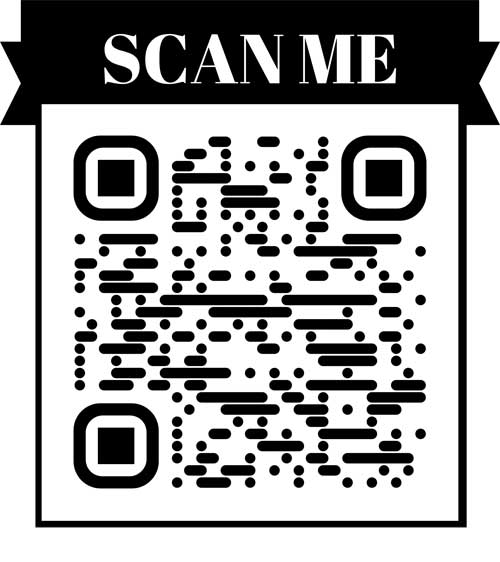QR codes can offer a seamless experience for members, donors, and supporters of churches, charities, and nonprofits. Here’s how these organizations can utilise QR codes:
Donations & Tithing:
You can easily print QR Codes on bulletins, posters, and flyers to facilitate online donations. When scanned, the code can direct donors to a secure payment gateway where they can make a contribution.
Many churches will print the QR Code on a sticker etc and attach to the back of the pew or seat in a church.
Display QR codes during live events or broadcasts. This allows viewers to quickly and easily donate in real-time.
Event Registrations & Tickets:
How Churches, Charities, and Nonprofits Can Leverage QR Codes for events and registrations. By using a QR Code you can provide your redistrants with many benefits from registering to speaker profiles and follow up material like special offers and video replays.
It can also be used for selling tickets. Once scanned, supporters can purchase tickets or register for the event.
Digital Bulletins & Programs:
Instead of printing weekly bulletins, have a QR code on a poster or flyer at the entrance that attendees can scan. This directs them to the week’s bulletin online, reducing paper waste and printing costs.
You can also put a QR Code on the back of seats so when they scan and go to your website they can choose from bulletin, toithing and any other information with just a click.
Many Churches, Charities, and Nonprofits are finding they are able to connect with their comunities much easier with this type of promotion and interaction.
Feedback & Surveys:
Encourage members or supporters to give feedback by scanning a QR code, which leads them to a survey or feedback form that lead to social media pages. This can provide a platform for interactive feedback.
By integrating QR codes into their communication and outreach strategies, these organizations can foster improved interaction, engagement, and feedback collection.
Informational Videos & Testimonials:
Share success stories, informational content, or testimonials. A QR code on print materials can direct people to videos or content online.
Incorporating QR Codes into operational strategies can significantly bolster fundraising efforts, amplify awareness campaigns, and foster tighter community ties. Proper utilization and placement can make QR Codes a potent tool in the digital arsenal of churches, charities, and nonprofits.
Volunteer Sign-Up:
Make it easy for members to sign up for volunteer opportunities by scanning a QR Code that leads to an online registration form.
By integrating QR codes into these strategies, churches, charities, and nonprofits can streamline volunteer sign-ups, engage with a wider audience, and boost participation.
Digital Library & Resources:
Share digital resources, such as e-books, articles, courses, or videos. QR codes can provide direct access.
Again you can link a QR Code to a single page with links to all your resources, training etc. By incorporating resources you already have like websites etc you can convert traditional media to digital media in a single click.
None of this takes much effort if you plan it out and it will always be current and accessible. A little effort to start will provide long lasting benefits for your community.
Check-ins & Attendance:
Instead of manual check-ins, attendees can scan a QR code upon entering an event or service, automating attendance tracking.
Google Forms Integration: Use QR Codes with Google Forms to make attendance tracking simpler. By scanning a QR code, attendees can quickly mark their presence, which gets registered in the Google Form
Google forms are free and will also allow you to download a spreadsheet with all the details of the filled out form. Remember we all used them during covid and still very useful today.
Virtual Tours:
For historic churches or nonprofit facilities, QR codes can be placed at various points of interest, guiding visitors through a virtual tour.
QR codes act as bridges, linking the physical and virtual worlds. They offer a simplified way for audiences to access virtual tours and provide marketers an opportunity to increase engagement and interest in their offerings.
Merchandise & Sales:
If the organization sells merchandise or products, use QR codes on tags or posters to direct supporters to the online store.
Embed QR Codes on business cards, product packaging, brochures, print advertising, and direct mail to establish an additional marketing touchpoint, making the brand more interactive and engaging.
Use QR codes in creative and strategic locations to garner attention and foster engagement. For example, placing them on storefronts or pop-up events could draw in potential customers
Contact & Social Media:
Direct members and supporters to the organization’s social media profiles, websites, or contact forms.
Single QR for Multiple Platforms – Instead of creating individual QR codes for each social media profile, you can vreate links on your website on in a bizlink to allow you to generate one QR code that links to all of your profiles, such as Facebook, Twitter, Instagram, and more.

You can manage your own Bizlink for $10 a year as per above. Contact us or visit https://bizlinks.info/
Education & Training:
How Churches, Charities, and Nonprofits Can Leverage QR Codes for education a nd training. QR codes have become increasingly popular in the field of education and training due to their ability to easily and instantly provide learners with access to information. Here are some of the key ways QR codes can be utilized for educational and training purposes:
- Quick Access to Course Materials: QR codes can be placed in classrooms or training venues to give students or trainees immediate access to course materials[6].
- Supplemental Information Delivery: These codes can be used to provide additional information where and when learners need it, supporting in-depth understanding[3].
- Interactive Learning Process: Teachers can incorporate QR codes to disseminate instructional materials, making the learning process more engaging for students[5].
- Data Representation & Digital Systems: Introducing QR codes in classrooms can offer an avenue to discuss data representation and how digital systems operate[4].
- Enhanced Employee Training: QR codes can be integrated into employee apps, offering various benefits like easy content access and tailored learning experiences.
Best Practices:
- User-Friendly Design: Ensure that the landing page or content the QR code directs to is mobile-friendly since most users will be scanning with smartphones.
- Clear Instructions: Always provide clear instructions next to the QR code, e.g., “Scan to donate” or “Scan for this week’s bulletin.”
- Short URLs: Use URL shorteners when generating QR codes so that the matrix is simpler and quicker to scan.
- Testing: Always test your QR code with different devices to ensure it works correctly before distributing.
- Analytics: Use QR code generators that offer analytics. This way, you can measure how many times the code was scanned and gather insights into its effectiveness.
- Safety: Always ensure that the payment gateways or platforms you’re directing donors to are secure. This will help in gaining the trust of donors or members.
Incorporating QR codes into the daily activities of churches, charities, and nonprofits can streamline various processes, making engagement more interactive and modernized.

